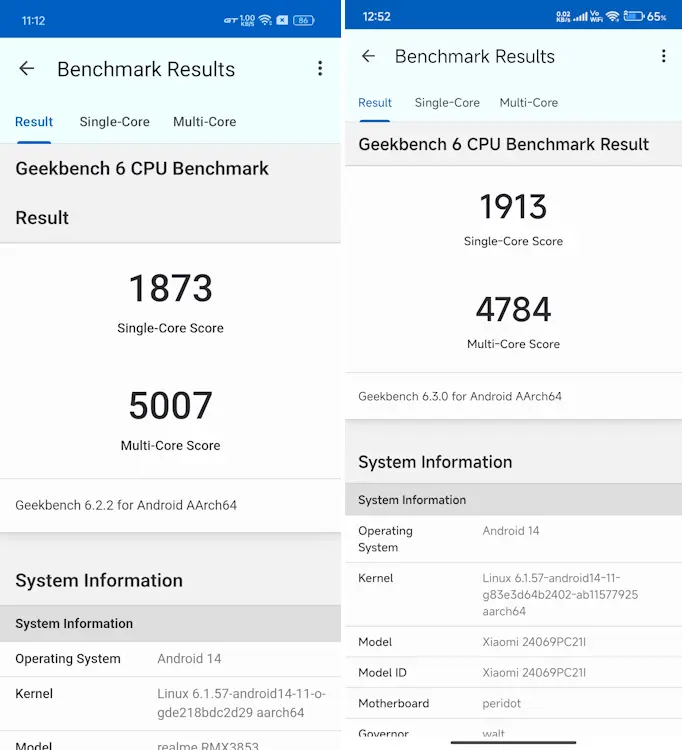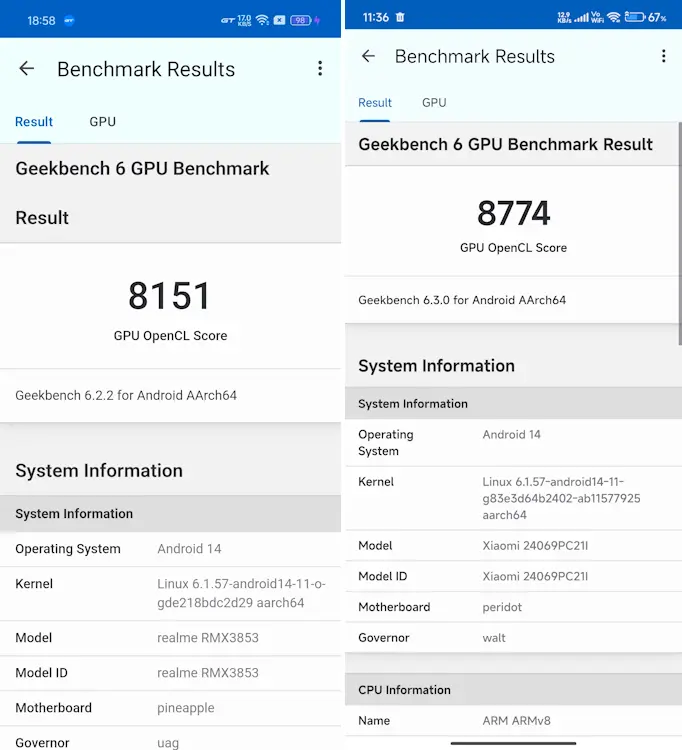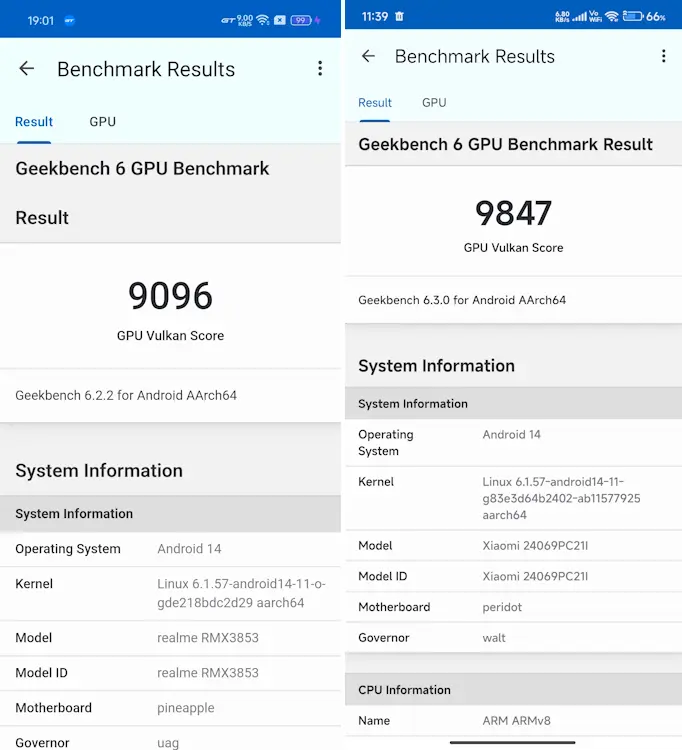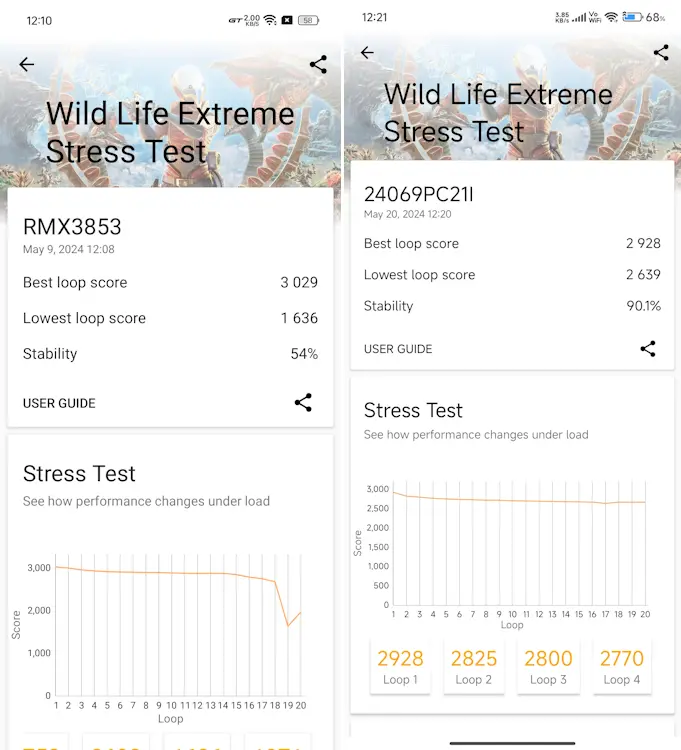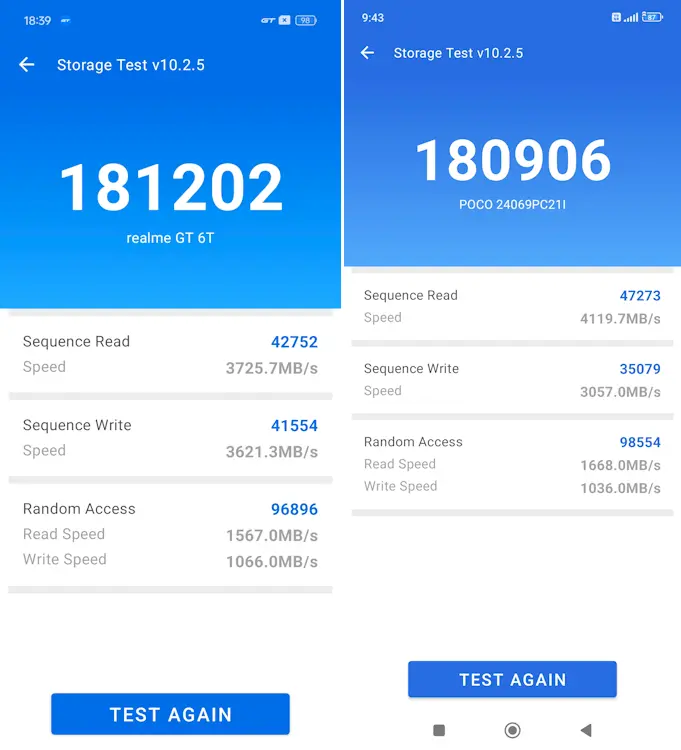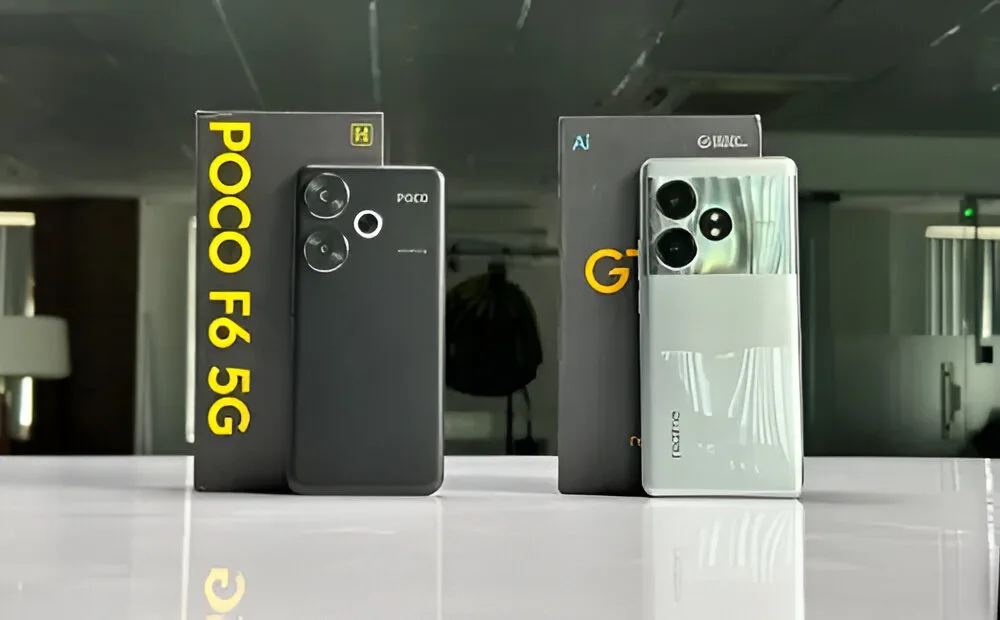
The smartphone market is currently flooded with high-performance mid-range options, and leading the pack are the Realme GT 6T and POCO F6. The GT 6T boasts the Snapdragon 7+ Gen 3 chipset, while the F6 packs the Snapdragon 8s Gen 3, making the choice between them quite challenging. What adds to the dilemma is that the prices of the two phones are separated by just Rs 1,000.
Although I reviewed the Realme GT 6T and my colleague Saurabh handled the POCO F6, we didn’t directly compare the two. However, the need for a detailed comparison is clear, so here we are. Without further ado, let’s dive into the Realme GT 6T vs POCO F6 comparison.
Realme GT 6T vs POCO F6: Specs Comparison

Realme GT 6T vs POCO F6: Performance
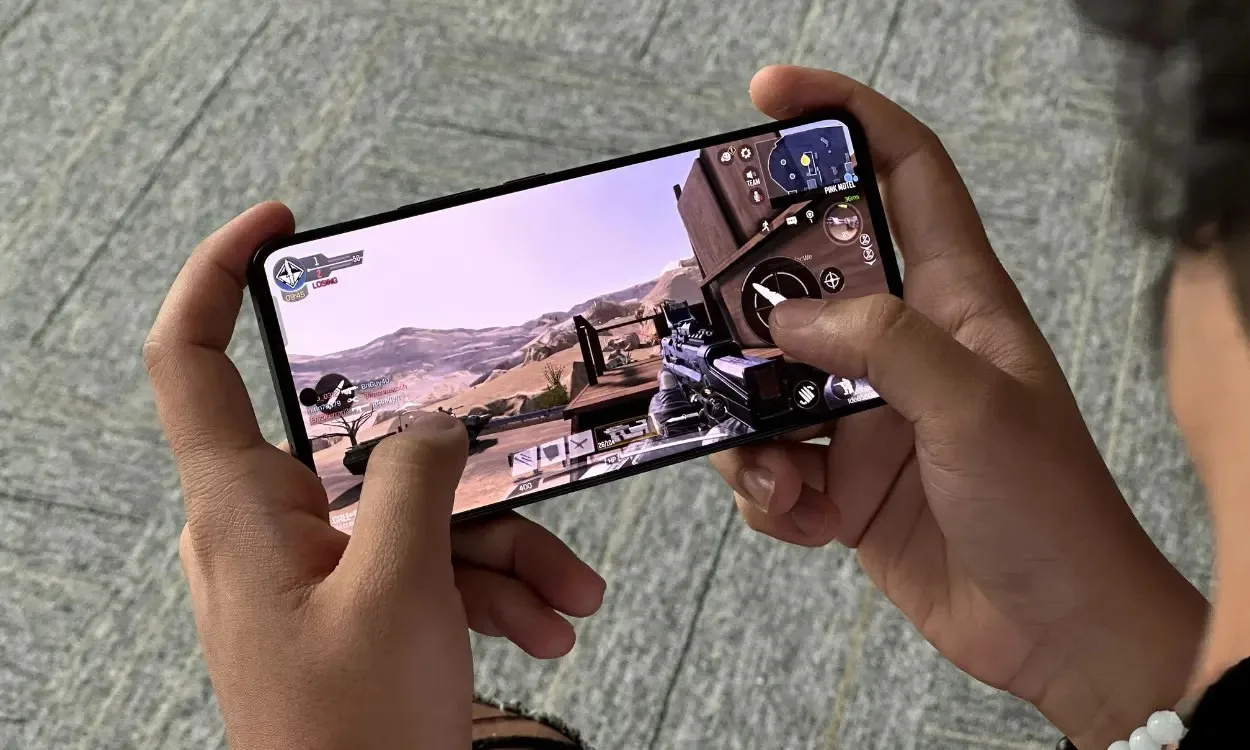

Let’s start with what you’re here for – the performance – before moving on to other aspects.
The Realme GT 6T debuts with India’s inaugural Snapdragon 7+ Gen 3, while the POCO F6 is driven by the Snapdragon 8s Gen 3. The naming conventions of these chipsets can be perplexing, and a thorough explanation of Snapdragon’s intricate naming system can be found here. However, in simple terms, the 8s Gen 3 is essentially a slightly overclocked version of the 7+ Gen 3.
Consequently, although you might observe minor variations in benchmarks and gaming performance, they are essentially indistinguishable. Furthermore, both chipsets are constructed on TSMC’s 4nm architecture, ensuring equivalent power efficiency.
Even the RAM and storage types are identical, providing up to 12GB of LPDDR5X RAM and 512GB of UFS 4.0 storage. Nonetheless, the Realme GT 6T also offers an 8GB/128GB variant, which features the UFS 3.1 type instead. I have the top variants of both phones with me for your convenience.
Yes, the technical specifications are impressive, but which of the two performs better in real-world scenarios? Let’s explore.
Day-to-day Usage
During my usage of both phones, I could hardly discern any difference. They are both more than capable of handling intensive multitasking without any noticeable hiccups. The user interfaces (UIs) didn’t exhibit any annoying stutters or lags, and transitioning between apps was smooth. Neither phone seemed to struggle with any of these tasks.
On days when my usage was particularly heavy, I often had around 20 apps running in the background, leading to a cluttered recent apps tab. This serves as the perfect test for RAM management, and both phones passed with flying colors. Having maintained their performance throughout my daily usage, I decided to push them a bit further.
Benchmarks
I conducted a series of benchmark tests to showcase the true potential of these phones. This included standard tests like AnTuTu and storage tests, Geekbench, CPU Throttling, and Wild Life Extreme to stress the chipsets. Here are the results:
The benchmark results indicate that the two phones are evenly matched in terms of raw performance, with the minor differences being of little significance.
Gaming
For those reading this comparison, this is likely the most crucial section. Therefore, I will endeavor to provide as much clarity as possible here. I tested both phones with CoD Mobile, Warzone Mobile, BGMI, Genshin Impact, and Grid Autosport.
It’s worth noting that newly released chipsets often require some time to unlock their full gaming potential, as higher settings may not be immediately available. This is also evident with these two handsets. Currently, BGMI does not support 90FPS on either device.
However, the POCO F6 does support 120FPS in CoD Mobile, whereas the Realme GT 6T is currently capped at 60FPS. We reached out to Realme, and they mentioned that 90FPS support for BGMI will be available on the GT 6T by mid-June.
In Warzone Mobile, the Realme GT 6T achieves approximately 90FPS with the High+Uncapped setting, which is impressive given the game’s lack of optimization. However, the game doesn’t run as smoothly on the GT 6T, averaging around 55FPS, which is still decent but nearly half of what the F6 achieves.
Genshin Impact runs super smoothly on both phones, consistently hitting 60FPS, with the POCO F6 achieving this more frequently. During intense battles, the Realme GT 6T’s frame rate can drop to around 55FPS, which isn’t a significant difference, but it’s worth noting. Additionally, neither phone overheated during gaming, which is a dream scenario for gamers.
Furthermore, the Realme GT 6T offers GT mode, while the POCO F6 provides Ultimate Mode, both of which can further enhance your gaming experience.
Here’s a quick summary of the gaming performance you can expect from these two phones:

Even after an hour of gaming, temperatures stabilized at around 42 degrees Celsius on both devices, which is quite satisfactory.
Realme GT 6T vs POCO F6: Connectivity and Battery
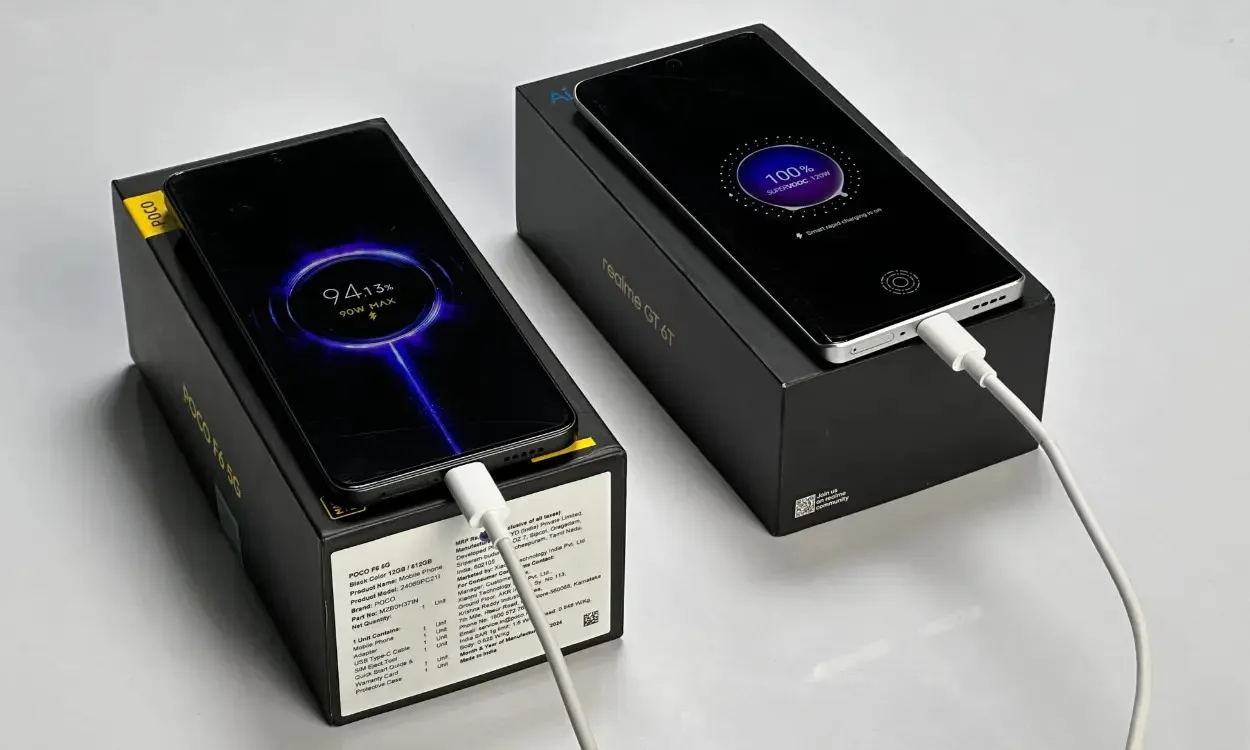
Where there’s impressive performance, there also needs to be a solid battery to support it. In this regard, the Realme GT 6T stands out with its large 5,500mAh battery. Furthermore, its LTPO display enhances power efficiency. I spent approximately 4 hours gaming, watched YouTube videos for 2 hours, and ran benchmarks for an hour, resulting in around 7 hours of screen-on time.
This is approximately 2 hours more than the POCO F6’s 5 hours of screen-on time. However, the POCO F6 features a slightly smaller 5,000mAh battery. Additionally, the fast charging technology supporting the GT 6T is faster, with the included 120W charger fully charging the phone in roughly 26 minutes. In comparison, the POCO F6 takes around 35 minutes to fully charge, which is also impressive but slightly slower.
Realme GT 6T vs POCO F6: Design and Build Quality
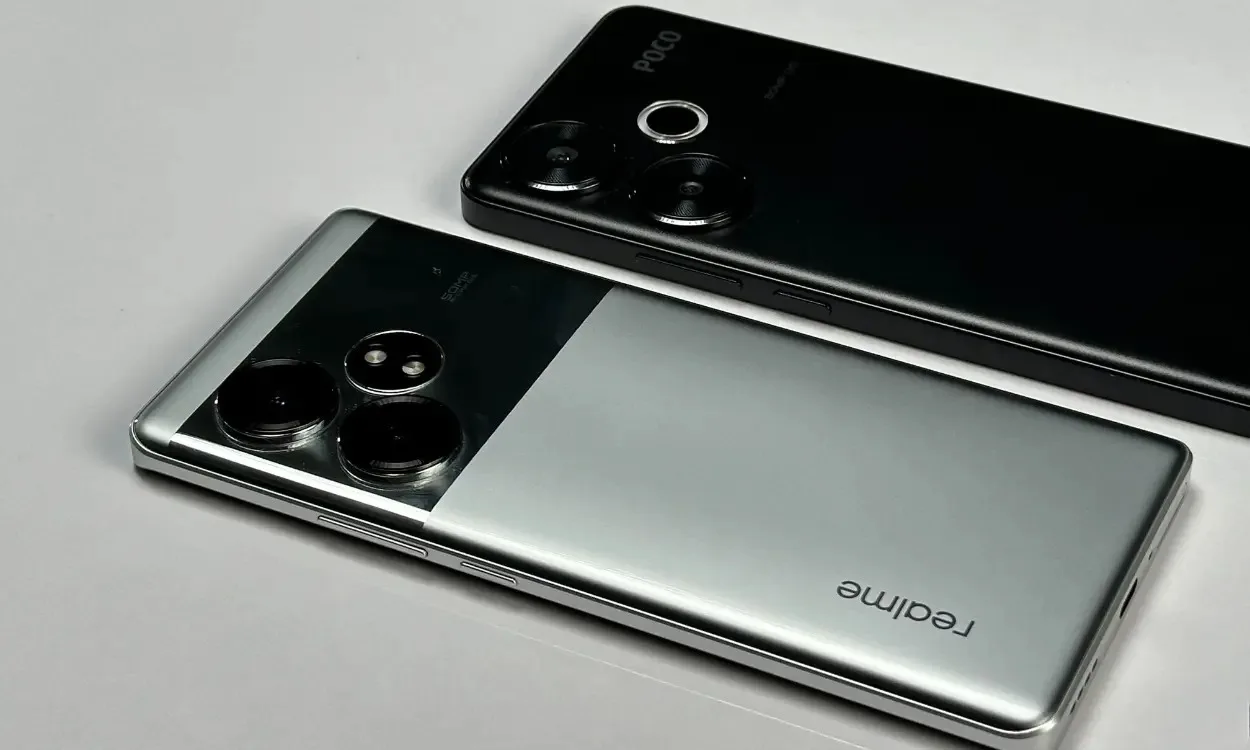
For your information, I have the Realme GT 6T in Fluid Silver and the POCO F6 in Black. Both phones come with everything you need right in the box, including their respective fast chargers and solid silicone cases.
However, while both phones offer impressive performance, their designs leave much to be desired, akin to the taste of cardboard. The designs are bland and uninspiring.
The Realme GT 6T attempts to add some flair (perhaps a bit too much) with its flashy dual-tone plastic back panel that mimics glass. In contrast, the POCO F6 opts for a more understated look with its minimalist matte plastic rear panel. This is why I personally prefer the POCO F6’s design.
Furthermore, the matte finish on the POCO F6’s back panel makes it more resistant to smudges, whereas the GT 6T’s back is a magnet for fingerprints. Additionally, the POCO F6 is slimmer and feels more comfortable to hold, while the Realme GT 6T is heavier. Both phones feature a matte-finish plastic frame with the volume rocker and power button located on the right side.
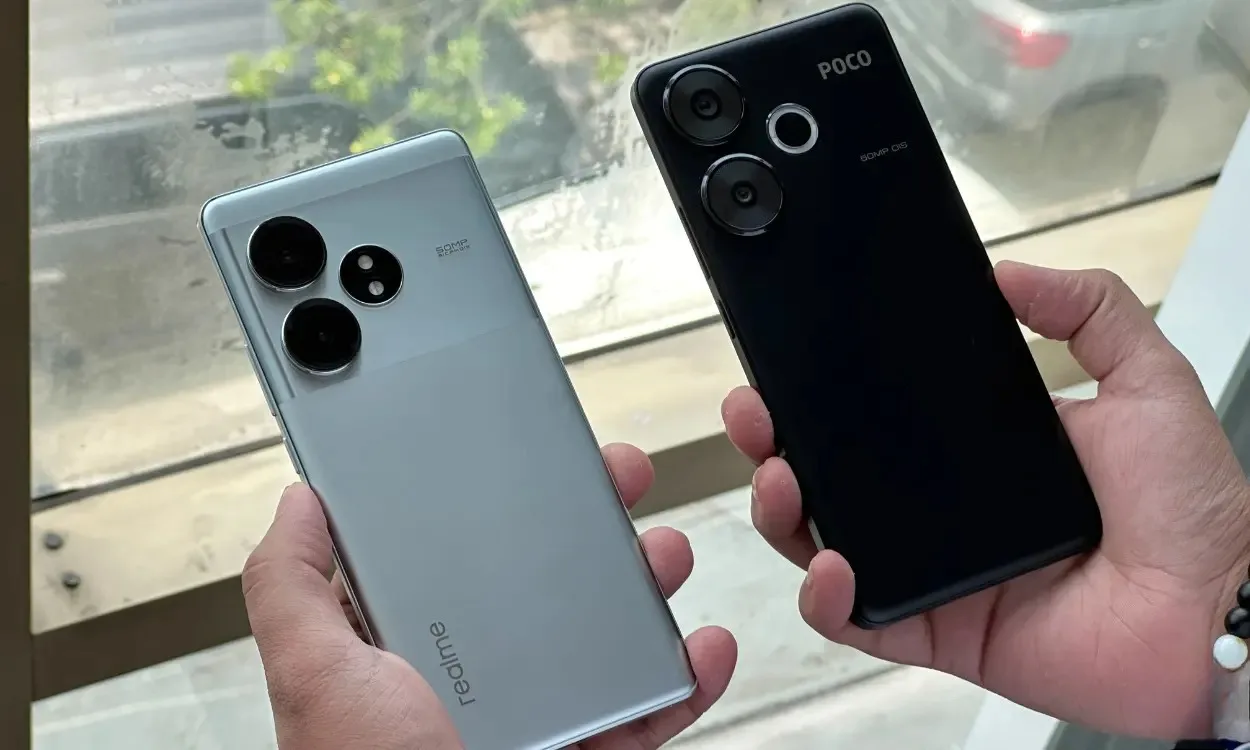
The camera modules of both phones share a striking resemblance, but both devices wobble when placed on a flat surface. The POCO F6, however, has better weight balance, feeling lightweight overall. In contrast, the Realme GT 6T feels slightly heavier at the top.
Regarding IP ratings, the Realme GT 6T boasts an IP65 rating, while the POCO F6 offers an IP64 rating, both of which are respectable.
Realme GT 6T vs POCO F6: Display
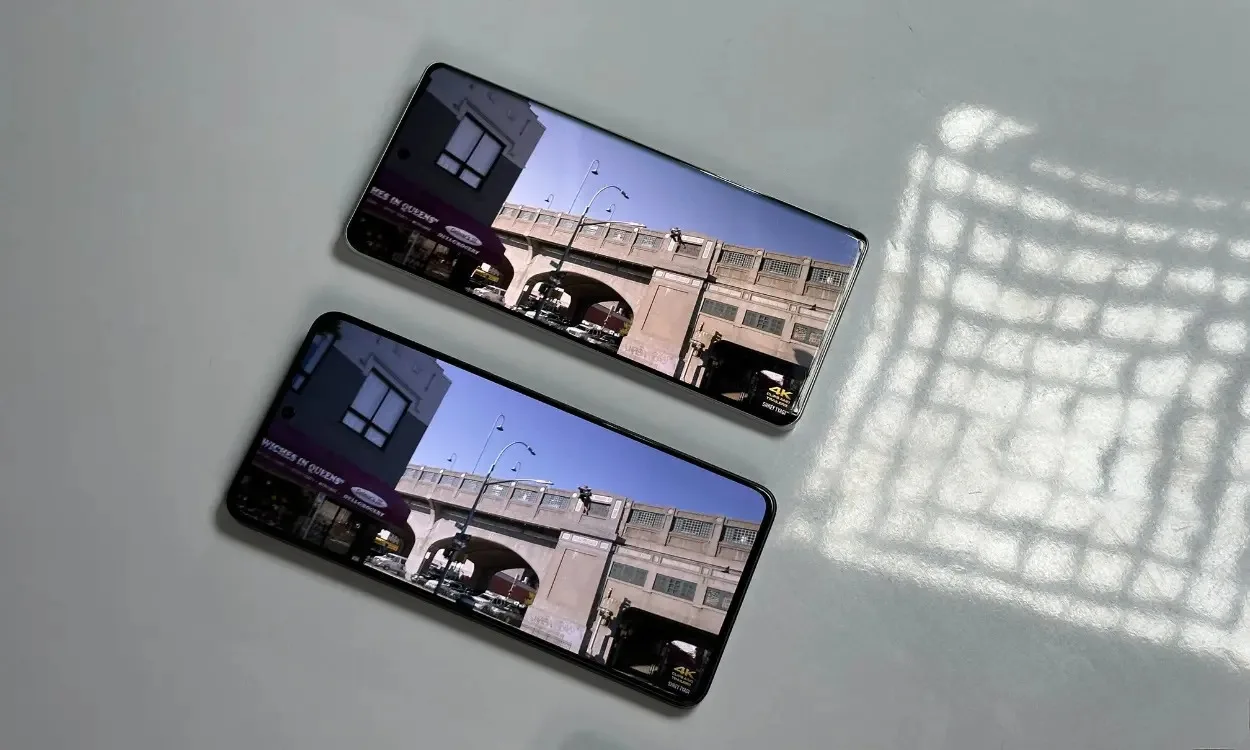
Moving on to the displays, there are notable differences between the two. The Realme GT 6T features a 6.78-inch LTPO AMOLED curved display, whereas the POCO F6 has a slightly smaller 6.67-inch AMOLED display without LTPO technology. Both displays offer a 1.5k resolution and 120Hz refresh rate, but the bezels on the POCO F6 are slightly thicker.
One significant difference is in the brightness levels of the displays. Both phones offer excellent visibility indoors and outdoors, but the Realme GT 6T is noticeably brighter. We measured a peak brightness of around 2,700 nits with a Lux Meter in the office for the GT 6T, while the F6 maxed out at about 2,100 nits.
Compared to the F6, the GT 6T’s display is more reflective, but its higher brightness compensates for this. Overall, this shouldn’t be an issue.

The Realme GT 6T offers better display protection with Corning Gorilla Glass Victus 2, while the POCO F6 is equipped with Gorilla Glass Victus 1, which is slightly inferior but still robust. The use of Gorilla Glass Victus 2 on the GT 6T is particularly beneficial due to its curved display, which benefits from additional protection.
In terms of HDR performance, the Realme GT 6T delivers exceptional performance, while the POCO F6 enhances brightness, resulting in slightly boosted colors. The Realme GT 6T offers superior blacks and richer colors compared to the POCO F6.
However, it’s worth noting that while the Realme GT 6T has yet to receive HDR support on Netflix, the POCO F6 already supports HDR on the platform.
Realme GT 6T vs POCO F6: Software Experience
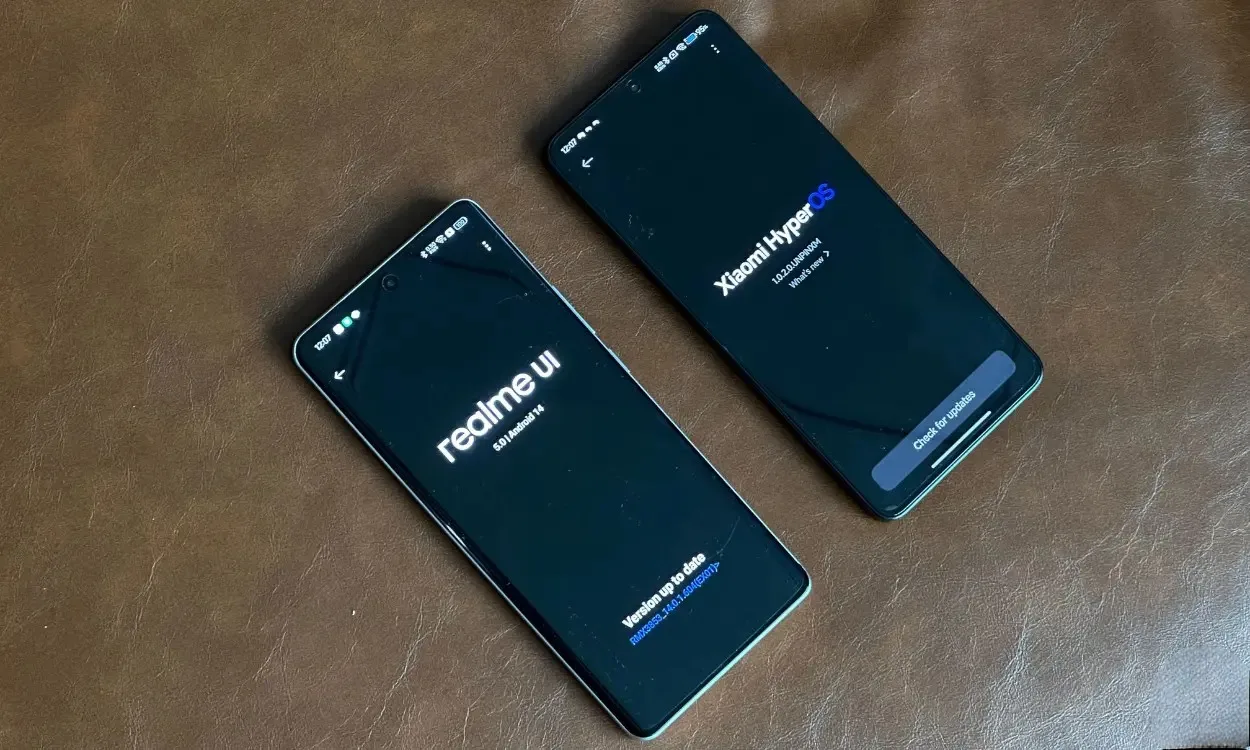
Both phones come with Android 14 out of the box, each with its own skin on top. The Realme GT 6T features Realme UI, while the POCO F6 comes with HyperOS. Upon initial use, I quickly noticed that HyperOS on the F6 was heavily laden with bloatware.
The phone had 14 pre-installed apps, and ads seemed to appear from every direction. Despite being a significant improvement over the old MIUI, the excessive bloatware detracted from the user experience.
On the contrary, while Realme UI on the GT 6T isn’t completely free of bloatware, it only includes 6 pre-installed apps. This results in a much cleaner experience, which I personally found to be more appealing.
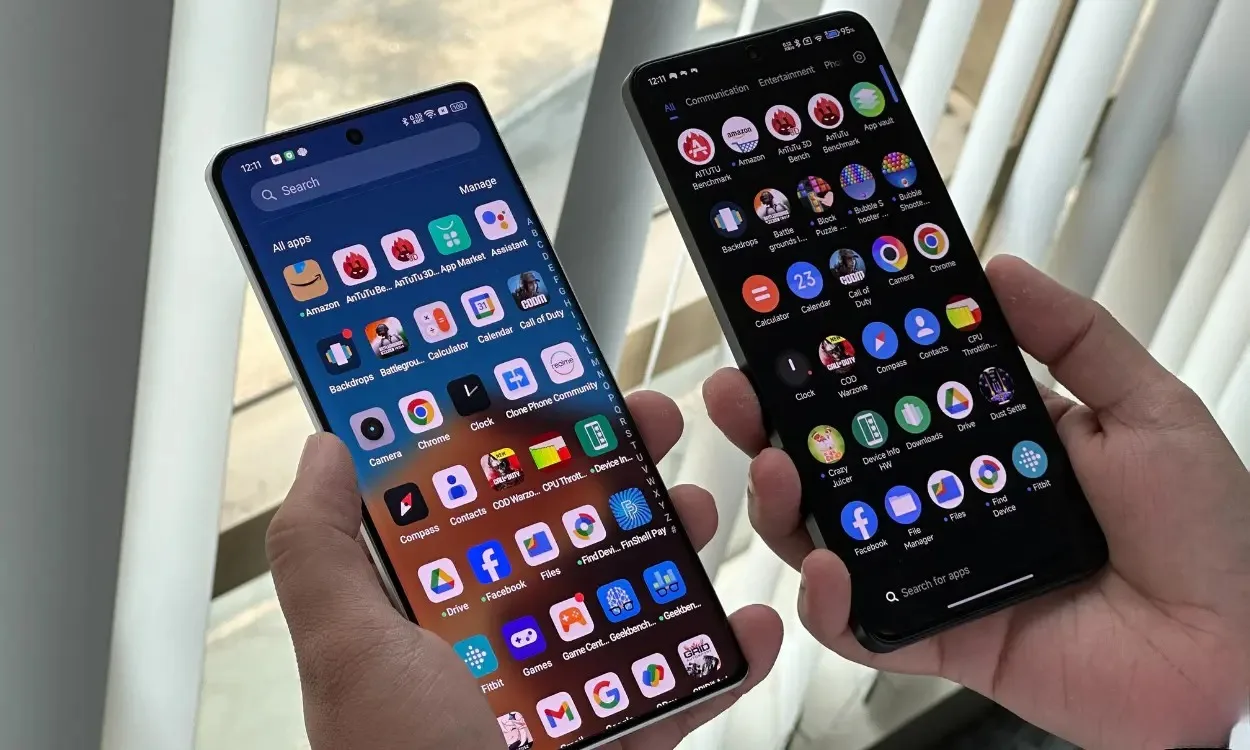
In terms of features and aesthetics, HyperOS emerges as the winner. It offers a range of features from Super Wallpapers to newer additions like Active Visual Perception, Contactless Gestures, and even heart rate monitoring, albeit gimmicky. There’s a lot more to explore and enjoy here.
On the other hand, Realme UI is more conservative in comparison. It includes features like integrated Link to Windows support, a File Dock (borrowed from OxygenOS), and others, but lacks standout elements. The GT 6T is also slated to receive an AI update, and we’ll be sure to provide an update once it’s released.
Both phones also boast impressive software support, with 3 years of major OS updates and 4 years of security patches, a commendable feat in this segment.
Realme GT 6T vs POCO F6: Cameras
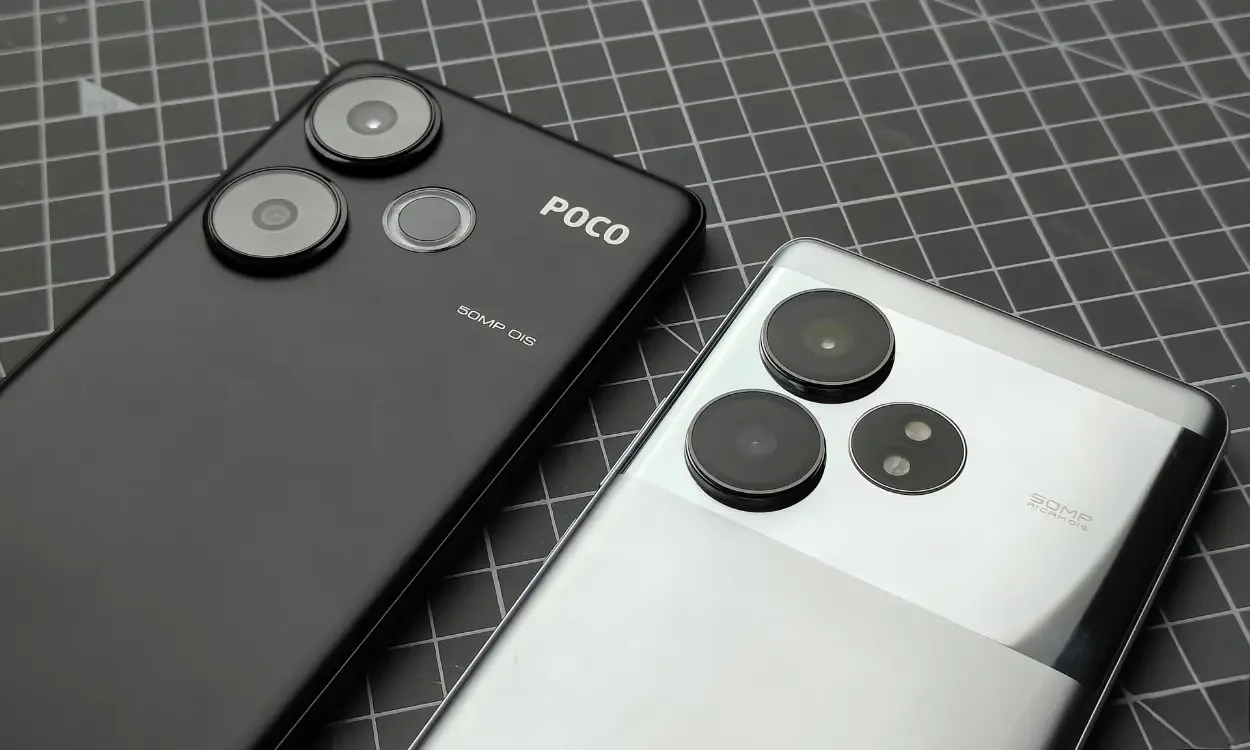
When it comes to the cameras, the Realme GT 6T boasts a 50MP Sony LYT 600 primary sensor with OIS, while the POCO F6 features a Sony IMX 882 primary sensor with OIS. Both phones have an 8MP secondary sensor, offering nothing out of the ordinary.
For selfies, the POCO F6 is equipped with a 20MP sensor, whereas the Realme GT 6T sports a 32MP sensor. With the specs covered, let’s delve into some real-life camera samples from both phones.
Daytime
In daylight conditions, the Realme GT 6T’s primary sensor tends to enhance colors slightly, while the POCO F6 captures more natural colors. The F6 also excels in capturing finer details, which became evident upon zooming in. Additionally, the POCO F6 exhibits better dynamic range, with shadows and highlights appearing more pronounced.
These observations extend to the ultrawide angle shots, where the POCO F6 captures more details. However, the ultrawide shots appear somewhat washed out, leading to a slight disparity in color compared to the primary sensor shots. This is not an issue for the Realme GT 6T, as its color tones remain consistent.
In portraits, the POCO F6 applies some skin smoothening, which can look somewhat unnatural. The Realme GT 6T’s portraits, on the other hand, stand out in this aspect. However, both phones capture skin tones equally well.
However, I did notice that the POCO F6 struggles a bit with managing light sources in the background, sometimes blowing them out. In contrast, the Realme GT 6T handles these light sources very well. Depth mapping is slightly better on the POCO F6, while edge detection is slightly better on the Realme GT 6T.
Night
At night, there’s a shift, and the Realme GT 6T captures more details with less noise. It also doesn’t overly enhance the night mode, resulting in a more natural look, unlike the POCO F6. However, the POCO F6 manages light sources better at night.
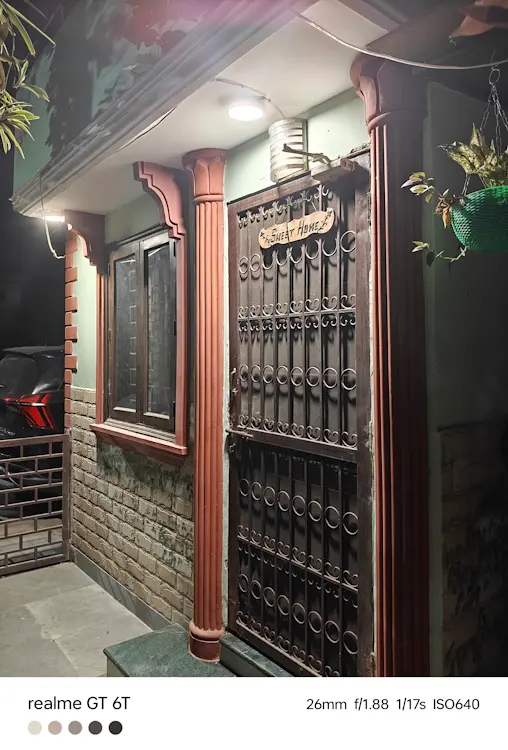

Selfies
The selfie camera of the Realme GT 6T is superior, offering more details. The POCO F6 tends to slightly increase saturation, which may not be to everyone’s liking. In portrait mode, the Realme GT 6T shines by capturing more details and applying less skin tone enhancement compared to the POCO F6. Both phones perform well in terms of edge detection and depth effect.
Videos
When it comes to video recording, both phones can shoot up to 4K 60FPS with their primary sensors. However, the Realme GT 6T can also record up to 4K 30FPS with its front camera, whereas the POCO F6’s front shooter is limited to 1080p 60FPS.
Realme GT 6T vs POCO F6: Final Verdict

While both are powerful devices, the POCO F6 stands out as the superior gaming phone. The Realme GT 6T, in its current state, doesn’t support higher graphics settings. In contrast, the POCO F6’s chipset seems better optimized for gaming, offering improved graphics settings and higher frame rates, even in unoptimized titles like Warzone Mobile.
Moreover, the POCO F6 offers slightly better-tuned cameras, while the Realme GT 6T has a more user-friendly UI. The GT 6T does excel in battery backup, and it also features a stunning display with superior protection. I believe that having just a gaming phone isn’t enough; it’s important to excel in other areas as well.
Both phones cater to your needs, but the choice depends on your priorities. If you prioritize slightly better gaming performance and camera quality, the POCO F6 is the way to go. On the other hand, if you’re willing to wait for the Realme GT 6T to unlock its true gaming potential next month and value a superior display and significantly longer battery life, then the GT 6T is the better option.
Considering the pricing, the POCO F6 is cheaper by Rs 1,000 at Rs 29,999. If this price difference matters to you, the F6 is the more economical choice. Additionally, while the base variant of the POCO F6 offers 256GB of storage, the Realme GT 6T provides only 128GB. Moreover, the 128GB configuration of the GT 6T uses the slower UFS 3.1 type. If storage capacity is crucial and you want faster storage, the POCO F6 is a clear winner.
However, both phones offer excellent gaming performance and overall value for around Rs 30,000. Future phones will have a tough time competing with these powerhouse devices.


